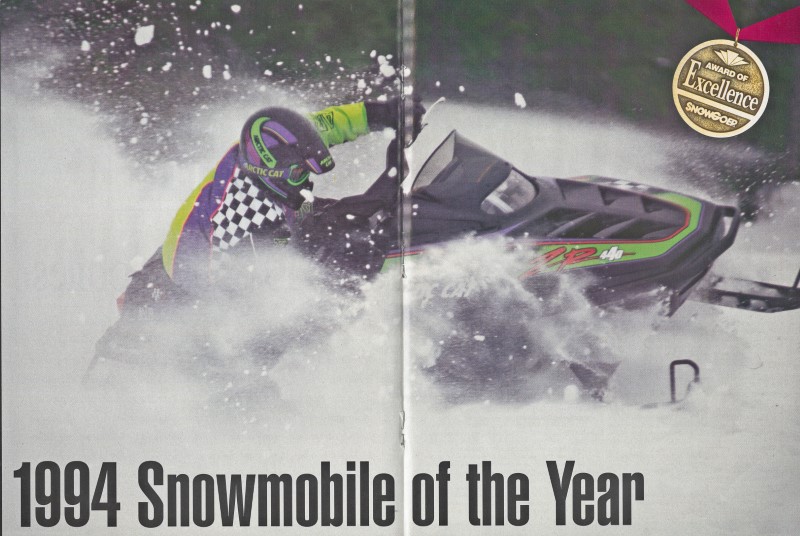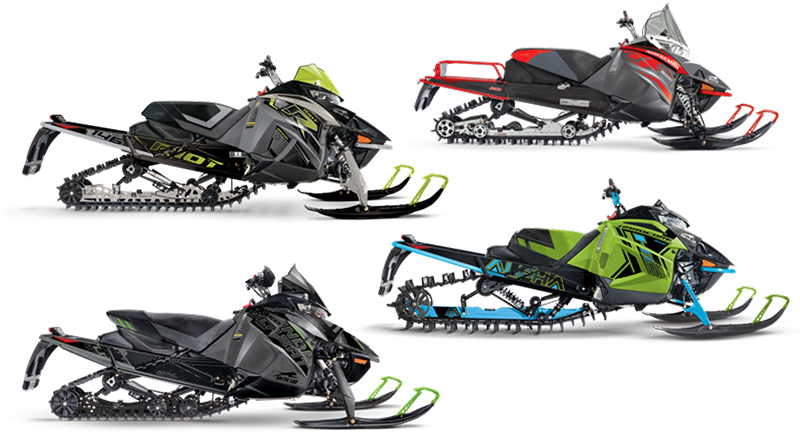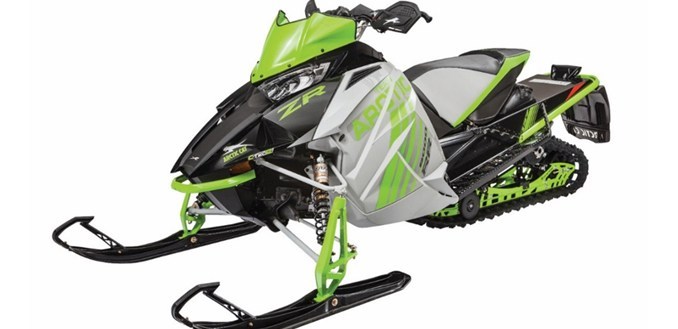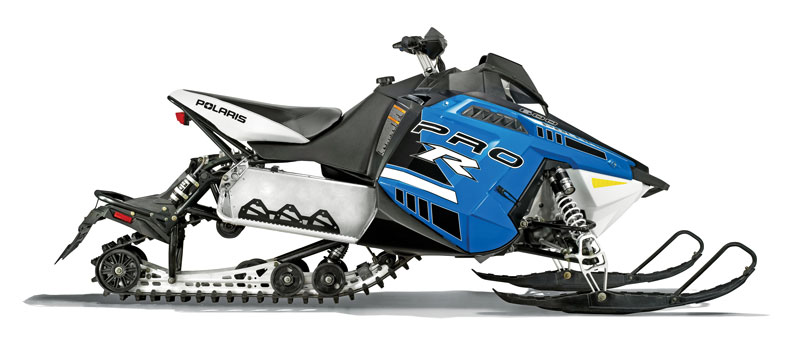…Continued from Page 3
SG: So you’ve got through them as individuals, tell me about the group dynamic. Do you all sit in the same area? Do you know each other’s families? What’s the relationship like?
EIDE: It’s a very tight group.
SPAULDING: Yeah. You know, I work with Mike and John and Jeremy and Ira, they are in our group, and Andy. You know, it’s so nice – there are no issues, with anything, with this bunch here. Everybody knows what we’ve got to get done, and they want to get it done. Mike, I don’t know if you mentioned anything about him, he’s our controller, and he kind of pulls the whole thing together in terms of design schedules and details and supplier relationships and what things have to get rolling. He’s on top of those things.
SG: In terms of working with suppliers, before for engines you had Suzuki. Now, all of a sudden, you have this work that has to get done and you have a bunch of suppliers and every single component has to come from somewhere. Does this fall on this group, or is there somebody in St. Cloud that does the sourcing?
SPAULDING: Once you choose [the suppliers] then it goes to the supply chain part of Arctic Cat. But we all did a lot of legwork on finding what suppliers we wanted.
HALLSTROM: As they developed this thing over the last couple of years, they all put on the jackets and gloves and helmets and rode these things. They didn’t just sit at a computer and desk and design these and then shove it over to somebody else and say, “There, now go ride and report back to me.” This crew here…
SPAULDING: We had our gang, and then we got the word that, OK, this is the motor we’re going to go with. And, boom, we started designing and soon we had a prototype motor – five or six of them – and everybody got to it, we got them on sleds. This group here, with four sleds, we put 30,000 miles on them in four months. Actually, not even that, more like three months. The engineering guys.
EIDE: I remember one spring day on Lake Of The Woods, when the lake was very smooth , I put on 450 miles – the most miles I ever put on in one day in my life, at 60 years old [wry smile]. With the sleds today, everything is so smooth and the engine ran flawless. That was two winters ago.
SPAULDING: We did the same thing this last winter too, but that first winter we ran our first motor, it was our gang that did it.
SG: You’ve been a part of the design of many, many successful motors in Arctic Cats. But were you more excited about the testing and launch of this new motor?
EIDE: Oh yeah, by far.
SPAULDING: I sure was. I’ve been excited for many motors that we’ve done over the years, but this one was special.
EIDE: This one was special – we sensed it from the whole team.
SPAULDING: When you thing about it and you look at that gang, it’s quite a fete.
SG: A lot of people over the years have made a big deal out of the fact that Bombardier, Yamaha and now even Polaris are massive corporations, while Arctic Cat is a bit smaller. Some have even played up an underdog mentality for Cat. Is that overblown, or do you feel that?
EIDE: I don’t see that at all.
HALLSTROM: And, at the end of the day, Ski-Doo and Polaris aren’t anywhere close to being as big as Yamaha (laughs).
EIDE: It makes us stronger if anything.
HALLSTROM: I think, when it comes to the snowmobile world, everybody is on more of a level playing field. You know, Yamaha is so ungodly big on all of their stuff. Polaris is very big with their side-by-sides and that. But their snowmobile business is really…
SPAULDING: It’s really the same sort of people doing the same thing.
HALLSTROM: We have about the same number of dealers, we all have about the same amount of product. Staffing-wise, we all are somewhat in the same neighborhood.
EIDE: If you look at the development or the engineering work that you do on a snowmobile, the guys up north [referring to Polaris in Roseau, Minnesota], they do it like we do it. They are up on the lake running, and we see each other go by.
SG: So, from your perspective, what then makes Arctic Cat different than the other guys?
SPAULDING: I think the experience that we’ve got and the people that we’ve got, and the guys that have been around a long time. You can’t compare Roger [Skime] to anybody, and Larry Coltom, he’s still around, he’s in our development group. Tubby Lund, Joey, Donn, Roger…
EIDE: The racing and performance heritage, and the passion, and the experience and quality of people that you’ve worked with forever.
SPAULDING: You know what was so different? When I came here, my first project was the triple FIII motor, and what became the production 600 triple. I had the motor developed and the exhaust and so forth, and then it went out in the field. And I’ll never forget – I don’t know if it was you, Donn, or somebody else who commented that Roger wondered why I wasn’t out there on that thing running it. That concept of having your hands on the whole works, on the whole package, is not what I had come from in my previous experience. That what’s been so different, beginning then and up until now, what’s so nice for me and everybody else here. You need to understand about the whole sled and not just the motor part. You’ve got to make the whole thing work, and that is a freedom you don’t have at other places.
SG: Are there any specific hurdles you came across when designing this particular engine?
EIDE: As far as the engine project, to me, and we talked about when we first started, we got the go-ahead at the end of August, and we knew that it was important that we get our working prototypes on the snow and tested before we lose the snow the following spring. So that was our prototype year, and we got a little bit of a late start and was a hurdle we had to overcome. We had to complete the designs, get the prototype parts, get them here, get the engines assembled, do some dyno work on them, and get durability testing done before we ran out of snow. That following April, we received our prototype engines and we got in the field right away. And, again, it was that time of year when we took this team [pointing at photography] and we all teamed up on the sleds and tested on Lake Of The Woods for about 2 weeks until the last ice cube went out. Then we went to Colorado with them for a couple of weeks, then came back here and regrouped, and then we went to Cooke City for a couple of more weeks. So we had basically three stages of approximately 2 weeks each on them…
SPAULDING: Yeah, and then Andy and I and a couple of guys went to Thompson [Manitoba] in between there.
EIDE: We knew the prototypes had to come through with flying colors, or else we’d miss a year. And they came through. I can’t say enough how the team stepped up and conducted all of that that spring, otherwise we would have been a year later with this. That was the spring of 2011. We were happy with what we saw.
SG: Before this stage, when you were putting the injection system on other, known engines, it sounds like it always worked, it was just a degree of how well it worked?
EIDE: We had to make sure you didn’t have a major problem where we blew a crankshaft or broke the cylinders or melted a piston or stuff like that. There are always little areas here and there that you find, but nothing that was a big setback. It was really the timing, where we wanted to have it ready in three [model] years. We were already pushing close to the fall, we had to get the design parts going and the proto parts going.
SPAULDING: Yeah, it was a challenge. If even a couple more weeks had gone by with no activity, we wouldn’t be talking about this motor this year, it would have been next year.
EIDE: The snow kind of runs our schedule; when you lose it in the spring. With an ATV, you can develop all year, but the snow, we only had until June to qualify our prototypes.
SG: That 600-700 class, to me, has always been a sweet spot for Arctic Cat – through the ’90s with the ZR 600s and then getting up to the F7, and certainly before and after those machines. To not have a consumer 600 the last couple of years, it just seemed anti-Arctic, because that’s such a good ditch motor, and you guys have always been great ditch sleds that are so fun to run. Was that gap in your lineup hard to accept, or are you guys so wrapped up in development of what’s coming next that it doesn’t play that much to you?
EIDE: We chose the 600 engine to develop, because the former 600 was getting old. With the 600 Sno Pro race engine being as powerful as it is and the DSI system proved to be a good match for it.
HALLSTROM: Yeah, obviously we sold a lot of 600s and 700s and things like that, but the 500s were also big to us. When Suzuki made a decision to no longer develop one [a 600] and we weren’t getting a new 600, yeah, we knew we had to stand on our own two feet. Absolutely. But it is what it is, you deal with what you’ve got to work with.





